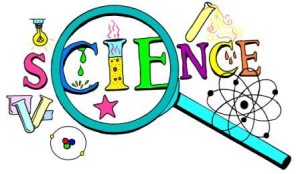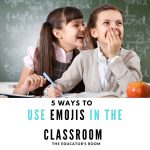 This summer the Kansas State Department of Education hosted three academies led by teachers for teachers. I attended a session on science curriculum to learn about the next generation science standards that will be implemented in my classroom next year. I have been teaching inquiry based science for five years (or more) and enjoy the learning process with my students. It is exciting to see the failure turned into learning and the process of science taking place in our classroom each day.
This summer the Kansas State Department of Education hosted three academies led by teachers for teachers. I attended a session on science curriculum to learn about the next generation science standards that will be implemented in my classroom next year. I have been teaching inquiry based science for five years (or more) and enjoy the learning process with my students. It is exciting to see the failure turned into learning and the process of science taking place in our classroom each day.
Getting kids excited about science is simple…ask them a question! Then, the real learning begins when you provide supplies they will need and let them explore. The learning focus is transitioned from the teacher sharing known information to the students exploring hypothetical information. This year I am going to use a new journal format to help myself remember to let the students take the lead in their learning.
There are many scientific phenomenon (a fact or situation that is observed to exist or happen, especially one whose cause or explanation is in question) in our fourth grade standards. Identifying those and finding materials that will demonstrate the phenomena for students is the first step. The fun part about this though, is you can find an experiment you love or an experiment you know your kids would love and tie it to a scientific phenomena that ties to your standards.
Start your lesson with an essential or guiding question. Provide any background information students might need to understand vocabulary and show them the materials for the experiment. Do not, however, tell them what will happen. Do not show them a clip of the experiment. Don’t take away their learning. Telling students what will or should happen during an experiment is like giving someone a gift and telling them what is in it before they open it. Let them learn!
Scientists write down and draw their observations. Student scientists should be no different. Allow students to make observations and record in their journal before the experiment starts. Below is a format you could provide for students to follow or let them create their own.
Date and Time:
Question: (This could be student created or you could form this question to lead students towards your phenomenon.)
Materials and Amounts:
Observations:
What do you see?
What do you feel?
What do you hear?
What do you smell (when appropriate/safe)?
Next have students make a hypothesis or two about what they will see during the experiment. A scientific hypothesis should include reasoning. What experiences do students have with these materials? What background knowledge do they have? Use this to provide a reason for their hypothesis. I think ______ will happen because I know________.
Now the fun begins. Remember, don’t tell students what to observe. Don’t tell them what they will see. Let them follow the procedures and draw diagrams and label their observations. What do you notice? Why do you think that is happening? Where have you seen something similar? Were you surprised? Ask questions to keep students thinking and making observations as they work through the experiment. Allow enough time for observation and enough time to draw what they are doing.
Finally you get to “teach”. What phenomenon (a fact or situation that is observed to exist or happen, especially one whose cause or explanation is in question) have we observed? What did you notice? Lead a conversation and provide the vocabulary and facts needed to bridge the experiment with your standards.
Lastly allow students time to reflect. This is an important part of the learning process that is often glazed over in classrooms. Science Discourse (the processes and methods used to communicate and debate scientific information) should be brought together here. What did you want them to learn? Allow students time to reflect on their experiment and answer your essential question in their own words. Encourage them to incorporate and add new vocabulary and scientific terms to describe the phenomenon.
So, how does this look? Are we really talking about phenomenon with elementary students? Try this:
Chemical Reaction in Baggie
1 tsp. baking soda
1 tsp. calcium chloride (ice melt)
Vial of water
Phenomenon of Sound—travels faster through solids and slower through air b/c fewer molecules. More sound at beginning when it was solid. Decreases when it was liquid.
Phenomenon of States of Matter—Gas takes up space
Scientific inquiry turns science into the hands of the students. It allows you time to observe and question while students work. It brings fun and engagement to the classroom. Make a quick list of your favorite science experiments. Now talk with a friend about what science phenomenon is demonstrated in these experiments. Where do you standards and objectives fit? They are in there. And while you are teaching science students are practicing and learning communication and listening skills (ELA), measurement skills (math), and writing skills (ELA). What are you waiting for? Take the plunge!





Leave a comment